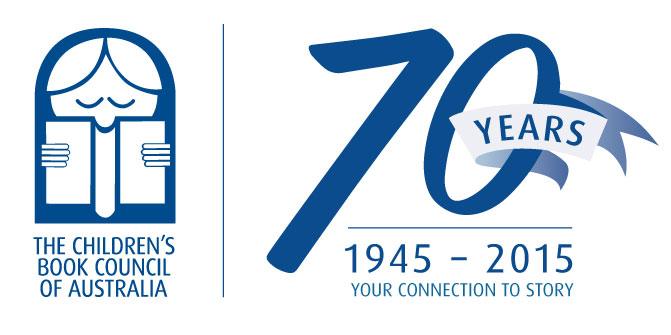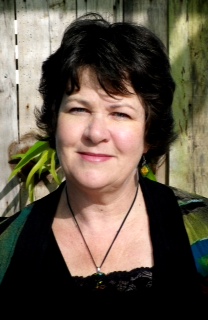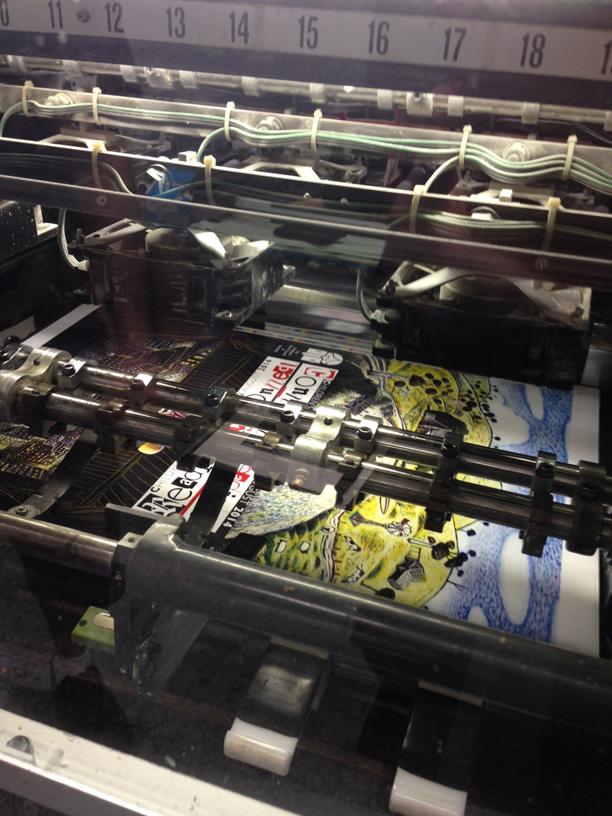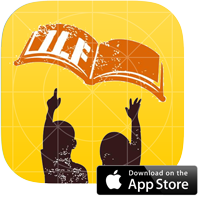The total number of entries for the 2015 Children’s Book Council of Australia Book of the Year was 434. This includes 386 fiction entries and 48 non-fiction.
Australian history was once again a dominant theme across many categories, with war and more specifically the 1915 Anzac Gallipoli campaign represented. However, the judges noted that it was refreshing to see war and its effects presented through the eyes of others, not just a nationalistic view. This shift in perspective helps broaden the debate, open that time period to a new audience, and provide alternative views.
Two categories were particularly strong this year in their level of excellence. Both the Older Readers and Early Childhood categories contained entries that challenged and fiercely competed for the judges’ attention. It was encouraging to see the abundance of quality children’s literature in these two areas, interestingly positioned at either end of the age scale.
Similarly, changes to how information and non-fiction is sourced by children have caused those producing information books to think differently about how they capture this audience. Hence entries in the Eve Pownall Award have shown more diversity in style, structure and readability. Although a shift from the traditional idea of information books, it is a welcome and refreshing change.
First-time authors and illustrators continue to be represented in the Notables across all categories and combined with the depth of experienced writers, this bodes well for the future of Australian Children’s Literature.
BOOK OF THE YEAR: OLDER READERS
This year there were 77 books entered in the Older Readers Category, which made up 18% of the entries overall. This category is often controversial, this year perhaps more than most, as books in this category are often gritty, exploring teenage sexuality, drugs and other confronting issues.
There were many strong contenders for the Short List, with over thirty books long-listed from which the judges chose their top ten nominations prior to the Judges’ Conference. These books were then discussed in detail with considered and often passionate appraisal before deciding on a Notable list of 21 titles.
Relationships were a popular and universal theme, as expected in this category relating to adolescents. There were good examples of contemporary fiction, such as The Incredible Adventures of Cinnamon Girl where humour danced alongside characters dealing with the issues of accepting change in their lives. Other issues explored were extremes of bullying within schools and the powers that can be exerted by groups of students. Laurinda and The Protected were exemplary in this field. With heartbreaking storylines causing the reader to fully experience the hurt and finally relief when help arrives in differing forms.
There were beautiful examples of empathy and friendship and seeing characters being accepted for their diversity and uniqueness. Intruder and The Minnow had complex characters and plotlines that encouraged the reader to peel away the layers. These books challenge and engage their readership with exquisite writing and haunting descriptions.
Historical fiction was prominent in opening the eyes of young adult readers to difficult, and sometimes intolerable, times in the world’s history. Books including Alexander Altman A50167, a powerful, harrowing story of a young boy surviving Auschwitz and The Ratcatcher’s Daughter, that highlighted the Black Plague in Brisbane in 1900, stood admirably in this ‘faction’ genre. Razorhurst allowed a thrilling glimpse of the gritty underworld of Sydney in 1932 and The Year it all Ended gave insights into a family in Adelaide after the war in 1918.
Readers are so lucky that publishers in Australia are confident to take risks with the huge range of issues and themes that talented authors are writing about to enrich and move young adult audiences. The judges urge readers to delve into the wonderful Notable Books and discover the breadth and depth of Australia’s authors and publishers.
It is also important to note that there was an unintended symmetry about the final Shortlist, in relation to youth and experience. Honours were shared equally amongst first-time authors, Clare Atkins and Dianne Sweeney, second-time authors, Melissa Keil and Claire Zorn and experienced authors Christine Bongers and Darren Groth.
BOOK OF THE YEAR: YOUNGER READERS
With 128 entries, the Younger Readers Category again attracted the largest number of submissions, representing 29% of the total number of 434 entries. This was a marked reduction from the number of entries last year. However, the composition of entries remains similar with series fiction, at 51%, being the most distinctive feature of the Younger Readers Category.
The scope of entries in this category is necessarily broad, reflecting its middle to upper primary school readership that has developed independent reading skills but still developing literary appreciation. Consequently, the submissions ranged from picture books with substantial text or sophisticated themes, to beginning chapter novels with abundant illustrations, through to novels of quite complex literary depth and structure.
Series fiction ranged across the readership. Recognition of gender and culturally determined reading preferences was evident in some series such as Wilderness Fairies and Our Australian Girl being pitched at girl readers, while others with male protagonists such as the Do You Dare? historical adventure series were boy-oriented. Judges noted that some series titles did not stand alone and were more in the nature of serials. This was particularly evident in Our Australian Girl in which each title was an unresolved episode within the series.
Sports-oriented fiction, especially for the younger readership, is growing as a genre. It is generally endorsed or co-written by popular contemporary sportspersons and features characters of both genders, such as Billy Slater: Try Time, and the Kick it to Nick series co-written by AFL player, Shane Crawford.
At the upper end of the readership, traditional fantasy fiction prevails, mostly as series. However, an emerging sub-genre is the maritime quest, exemplified by The Mapmaker Chronicles: Race to the End of the World. Speculative fiction presented thoughtful and narratively exciting tales through sub-genres and subjects such as steampunk, robotics and the etherworld of computers in novels including The Firebird Mystery, Machine Wars and Saving Thanehaven.
Serious themes of cultural and socio-political displacement, war, institutional child abuse, adoption and criminality were subtly covered within the contexts of fluent, lineal stories. Such character-driven novels as the Through My Eyes series and individual titles including No Stars to Wish Upon, Paper Planes, The Simple Things, Two Wolves and Crossing enable young contemplative readers to empathise with the protagonists and gain comprehensible insight into the essential nature of such concepts as totalitarianism and personal freedom.
Historical fiction remains a strong genre, with novels covering various periods and events in local history, from early European exploration, colonisation, disease epidemics, and the two world wars. The First Voyage presented a unique imagination of the circumstances that led to the first human settlement of the Australian continent.
It was pleasing to see a great variety of topics and genres remain available to younger readers at all levels of the readership. These include urban and rural adventure, historical fiction, sport, detective stories, environmentalism, animal stories, school fiction, ghost stories, and humour. Abundant illustration clearly enhances the narratives for the younger readers such as its essential role in The 52-Storey Treehouse.
Judges were pleased to note the presence of many new authors, notably Tamsin Janu whose Figgy in the World was shortlisted for the Younger Readers award, as well as popular established writers, continuing the tradition of excellence in reading for younger readers.
Within the category, the conventional prose narrative prevails. It was surprising to note that only one title each represented the genres of poetry, the verse novel and the graphic novel. Nevertheless, the Younger Readers category remains replete with a variety of literary genres, subjects and themes, with fiction to engage and entertain young readers and worthy novels to challenge and stimulate, generally delivered in books of good design and production quality.
BOOK OF THE YEAR: EARLY CHILDHOOD
The Early Childhood Category focuses on books for young children who are at pre-reading or the early stages of reading. This year there were 59 books entered in the category from which 20 were chosen as Notables with 6 of those shortlisted. The Early Childhood Category contained 14% of the total entries to the CBCA Book of the Year Awards.
The judging of these books concentrates on the appeal of the story and illustrations, and especially the suitability for early childhood, pre-reading development. An emphasis was also placed on the quality of layout, design and production, whether the illustrations extended the meaning and emotion in the text, and the overall cohesion of illustrations and text.
Entries this year included heart-warming stories of family life, a range of concept books particularly counting and alphabet development, such as B is for Bedtime, as well as retellings of rhymes and folklore, notably This Little Piggy Went Singing, Chooky Doodle Doo and One Night. Other themes included bravery, love, friendship, independence, sibling rivalry, animals and their habitats, individual differences, sport, music, school, self-esteem and more.
It was rewarding to note that many books had large clear double-page spreads and good use of white space. It was also noted that it is becoming more common that children represented in illustrations are from a range of multicultural backgrounds. The illustrations used a range of styles and media, with some being created entirely digitally, while others contained a mix of digital and hand-drawn illustrations. Media included collage, pen and ink, watercolour, gouache, acrylic and photography. Endpapers often supported the story and in many cases added another layer of understanding.
The judges were impressed with the overall standard of the stories, deeming 34% of the entries to be of very high quality. While in past years there have been several crossover books — books listed in both the Early Childhood and Picture Book Notable Book categories — in 2015 there was more differentiation between the two categories, with each list having a very different tone.
The list featured many familiar names: Stephen Michael King, Libby Gleeson, Alison Lester, but there were also some new picture book creators: Lesley Gibbes (Scary Night) and Karen Briggs, whose first picture book Kick with my Left Foot was also recognised in the CBCA Crichton Award this year.
PICTURE BOOK OF THE YEAR
The Picture Book category is for outstanding books of the Picture Book genre, in which the author and the illustrator achieve artistic and literary unity. These books may be suited to older readers and often demand a more sophisticated level of literacy. This year there were 74 entries from which 19 were chosen as Notables and 6 were Shortlisted. Judges observed there was a wide variety of themes and were impressed overall with the high production values. There were many outstanding covers. Among these were Floating Horizon, Vanilla Ice Cream, The Wild One, The Duck and the Darklings.
Nineteen entries in this category featured war themes, especially the 1915 Gallipoli campaign. Examples of these are The Afghanistan Pup, One Minute’s Silence, ANZAC Ted and Midnight: The Story of a Light Horse. Visual representation and interpretation of well-known songs was evident with the nominations of I Was Only Nineteen and Along the Road to Gundagai.
Other topics ranged over multiculturalism, the environment, humour, fantasy, history, families, pets and animals. Examples included: My Two Blankets, Fire, Outside, Good Dog Hank, Tea and Sugar Christmas and The Stone Lion.
After the Short List was finalised, the judges noted new authors and illustrators, as well as familiar names, which demonstrates a strong continuation of Australia’s current talent. 24 of the books entered and 2 of the shortlisted books had a single creator who both wrote the text and illustrated the book. It was gratifying to note that picture books of such high quality are still being produced for a wide range of readers.
EVE POWNALL AWARD FOR INFORMATION BOOKS
In 2015, 48 books were received across a wide range of topics for entry into this category, with a diversity of approaches in presenting information with engaging and creative design. The variety of imaginative ways of blending both narrative and ‘information’ has resulted in books that illuminate past times, ways of being, multiple perspectives and viewpoints. Books this year reflected current interests in our society, and authors and illustrators have not only presented information, they have invited readers to reflect, to learn, and in some cases to act.
It is not surprising that in the centenary year of World War I and the Gallipoli campaign, there should be many books on ‘war’ topics, covering The Western Front, Gallipoli (seven titles), the Light Horse charge at Beersheba, Afghanistan, and a comprehensive coverage of heroic Australian servicemen and women in all conflicts over the past 117 years. It was pleasing to see that several titles presented points of view from both ‘sides’ in some of these conflicts.
The broad scope of social, cultural and geographical experiences of Australian life were depicted in areas as diverse as colonial convicts in Tasmania, to modern young Muslim students in our cities today; from very young children on sunny Mornington Island, to the life of gangers on the Trans Australian railway line. Biographies explored the lives of Mary McKillop, Douglas Mawson, Australian authors, politicians and aviators. Health and wellbeing books enlightened younger readers on the topics of asthma, depression, and safety issues. Scientific texts included space and Antarctic exploration, and the natural world of insects, sea creatures and birds, while craft and design activity books were well represented. Entries ranged from books submitted by self-published authors to publishers at the National Library, The Australian War Memorial and Department of Veterans’ Affairs, and with strong entries from established publishers, all of whom are to be congratulated for continuing to strongly support this category of the CBCA Book of the Year Awards.
It was disappointing that a few books, while having interesting and engaging content, suffered from poor production values, being quite flimsy in construction and design. While factors of cost and the perception that non-fiction books are being superseded by the internet may deter some publishers from presenting non-fiction texts, it is clear from the high quality and broad range of topics in most of the books received, that information texts are alive and well in the computer age. They offer relevant, vibrantly illustrated and creatively designed works which encourage children to explore social and scientific facts of the world around them through insightful, imaginatively interpreted and highly engaging information books.




